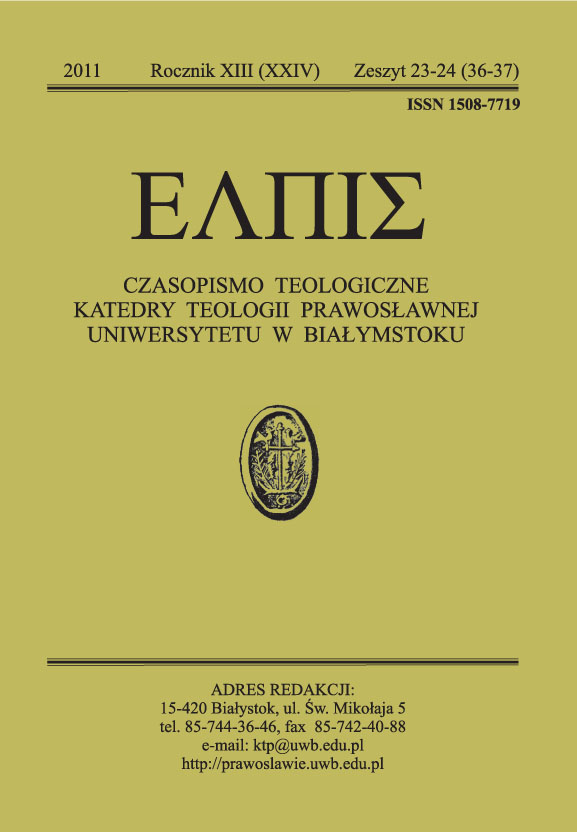Monastic life in the Diocese of Turov and Pinsk of the end of the XVI century
DOI:
https://doi.org/10.15290/elpis.2011.13.10Keywords:
monastic life, diocese of Turov and Pinsk, Orthodox ChurchAbstract
The history of the diocese of Turov and Pinsk until the end of the XVI century reflects the fate of the Orthodox Church in the Commonwealth. The development of the bishopric founded in 1088 passed through several stages resulting from often violent political, administrative and state changes. The prosperous period in the evolution of the Church structures on the territory of the discussed eparchy lasted until the end of the XII century. Under the rule of SviatopolkII (1087–1113) the diocese of Turov encompassed vast territories of the Ruthenian lands with the following towns: Turov, Pinsk, Brest, Kamenets, Kleck, Slutsk, Gorodno, Haradok (later Davyd-Haradok), Zditov, Nobel, Dubrovitsa, Kapyl, Liahavichy, Sniatyn, Drohiczyn upon Bug and Vawkavysk. Therefore the eparchy encompassed the area from the Lower Beresina and Dnepr in the east to Bug (on the side of Prypiat) in the west, from Kleck in the north to Lutsk, Dubrovitsa, Stepan and Chortoryisk in the south. For the principality of Turov it was the period of its greatest development and political importance. During that period first schools were founded, the art of icon painting developed as well as church architecture. Still the diocese of Turov depended too much on the political events. All political and Church changes influenced the situation in the principality of Turov.Downloads
Downloads
Published
How to Cite
Issue
Section
License
Copyright (c) 2014 Elpis

This work is licensed under a Creative Commons Attribution-NonCommercial-ShareAlike 4.0 International License.
The detailed terms of the CC BY-SA license (Attribution - Share Alike) are available on the Creative Commons website - link.
The author must complete and send to the editorial office (elpis@uwb.edu.pl) the completed and signed author's contract with a declaration of the originality of the article and the author's contribution to the article. Download Agreement File: HERE








